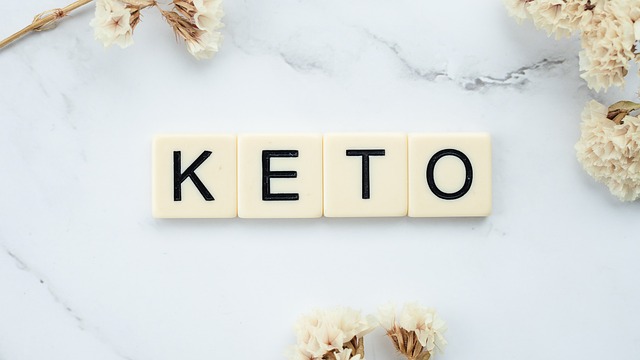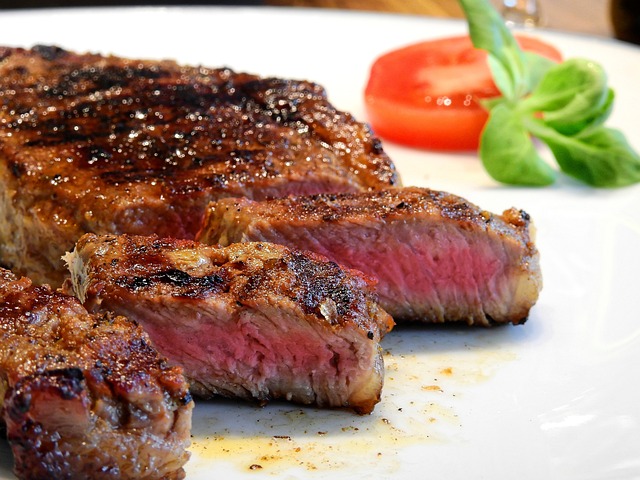A Starters Guide To The Ketogenic Diet

Introduction to the Ketogenic Diet
The Ketogenic Diet is a high-fat, low-carbohydrate diet that has been shown to help with weight loss, improve energy levels, and enhance overall health. By drastically reducing your carbohydrate intake and replacing it with healthy fats, your body enters a state of ketosis, where it burns fat for fuel instead of glucose.
What is the Ketogenic Diet?
The Ketogenic Diet is a low-carb, high-fat diet that has been used for decades to treat epilepsy and other neurological disorders. It involves drastically reducing your carbohydrate intake and replacing it with healthy fats, such as avocados, nuts, and olive oil.
How does the Ketogenic Diet work?
When you restrict your carbohydrate intake, your body enters a state of ketosis, where it burns fat for fuel instead of glucose. This can lead to rapid weight loss, improved energy levels, and better mental clarity.
Benefits of the Ketogenic Diet
Some of the benefits of the Ketogenic Diet include weight loss, improved energy levels, better mental focus, and reduced inflammation in the body. It has also been shown to help with conditions such as epilepsy, diabetes, and metabolic syndrome.
Getting Started with the Ketogenic Diet
Starting the Ketogenic Diet can be a bit overwhelming at first, but with the right guidance, you can be on your way to success in no time. Here are some tips to help you get started:
How to start the Ketogenic Diet?
To start the Ketogenic Diet, you will need to drastically reduce your carbohydrate intake and increase your consumption of healthy fats. This means cutting out foods like bread, pasta, and sugar, and focusing on foods like meat, fish, eggs, and vegetables.
What foods to eat on the Ketogenic Diet?
On the Ketogenic Diet, you should focus on eating foods that are high in healthy fats, moderate in protein, and low in carbohydrates. Some examples of foods to eat include avocados, nuts, seeds, olive oil, meat, fish, eggs, and non-starchy vegetables.
What foods to avoid on the Ketogenic Diet?
On the Ketogenic Diet, you should avoid foods that are high in carbohydrates, such as bread, pasta, rice, sugar, and processed foods. You should also limit your intake of fruits, starchy vegetables, and sugary drinks.
Meal Planning on the Ketogenic Diet
Meal planning is key to success on the Ketogenic Diet. By planning your meals ahead of time, you can ensure that you are getting the right balance of macronutrients and staying on track with your goals. Here are some tips for successful meal planning:
How to plan meals on the Ketogenic Diet?
When planning meals on the Ketogenic Diet, focus on including a source of healthy fats, a source of protein, and a variety of non-starchy vegetables. This will help you stay full and satisfied while keeping your carb intake low.
Sample Ketogenic Diet meal plan
Breakfast: Scrambled eggs with avocado and spinachLunch: Grilled chicken salad with olive oil dressingDinner: Baked salmon with asparagus and butterSnacks: Almonds, cheese, and celery with almond butter
Tips for successful meal planning on the Ketogenic Diet
Some tips for successful meal planning on the Ketogenic Diet include prepping your meals ahead of time, keeping healthy snacks on hand, and experimenting with new recipes to keep things interesting. It’s also important to listen to your body and adjust your meals as needed.
Staying on Track with the Ketogenic Diet
Staying on track with the Ketogenic Diet can be challenging at times, but with the right mindset and support, you can achieve your goals. Here are some tips to help you stay motivated and overcome obstacles:
How to stay motivated on the Ketogenic Diet?
Staying motivated on the Ketogenic Diet can be tough, especially when you hit a plateau or face challenges. To stay motivated, set realistic goals, track your progress, and celebrate your successes along the way.
Dealing with challenges on the Ketogenic Diet
Challenges on the Ketogenic Diet can include cravings, social situations, and lack of variety in your meals. To overcome these challenges, focus on finding healthy alternatives to your favorite foods, planning ahead for social events, and trying new recipes to keep things exciting.
Tips for long-term success on the Ketogenic Diet
For long-term success on the Ketogenic Diet, focus on making sustainable lifestyle changes, listening to your body’s hunger cues, and staying consistent with your meal planning. It’s also important to seek support from friends, family, or a healthcare professional if you need help staying on track.
Frequently Asked Questions
Is the Ketogenic Diet safe for everyone?
The Ketogenic Diet is generally safe for most people, but it may not be suitable for everyone. It’s important to consult with a healthcare professional before starting the diet, especially if you have any underlying health conditions or are pregnant or breastfeeding.
Can I exercise while on the Ketogenic Diet?
Yes, you can exercise while on the Ketogenic Diet. In fact, many people find that they have increased energy levels and improved performance during workouts on the Ketogenic Diet. Just be sure to stay hydrated and listen to your body’s signals.
How quickly can I expect to see results on the Ketogenic Diet?
Results on the Ketogenic Diet can vary from person to person, but many people report seeing results within a few weeks of starting the diet. These results can include weight loss, improved energy levels, and better mental focus.
Are there any potential side effects of the Ketogenic Diet?
Some potential side effects of the Ketogenic Diet can include fatigue, headaches, and constipation, especially in the beginning stages of the diet. These side effects are usually temporary and can be minimized by staying hydrated and getting enough electrolytes.
Can I follow the Ketogenic Diet if I have dietary restrictions?
Yes, you can follow the Ketogenic Diet even if you have dietary restrictions. There are many ways to modify the diet to fit your needs, such as avoiding certain foods or finding alternative ingredients that work for you.
How does the Ketogenic Diet compare to other popular diets?
The Ketogenic Diet is unique in that it focuses on high-fat, low-carb foods to achieve ketosis. Compared to other popular diets, such as the Mediterranean Diet or the Paleo Diet, the Ketogenic Diet may be more restrictive in terms of carbohydrate intake but can be equally effective for weight loss and overall health.
Can I eat out while on the Ketogenic Diet?
Yes, you can eat out while on the Ketogenic Diet. Many restaurants offer low-carb options that are suitable for the Ketogenic Diet, such as salads, grilled meats, and vegetable sides. Just be sure to ask for any sauces or dressings on the side and avoid high-carb items like bread or pasta.
